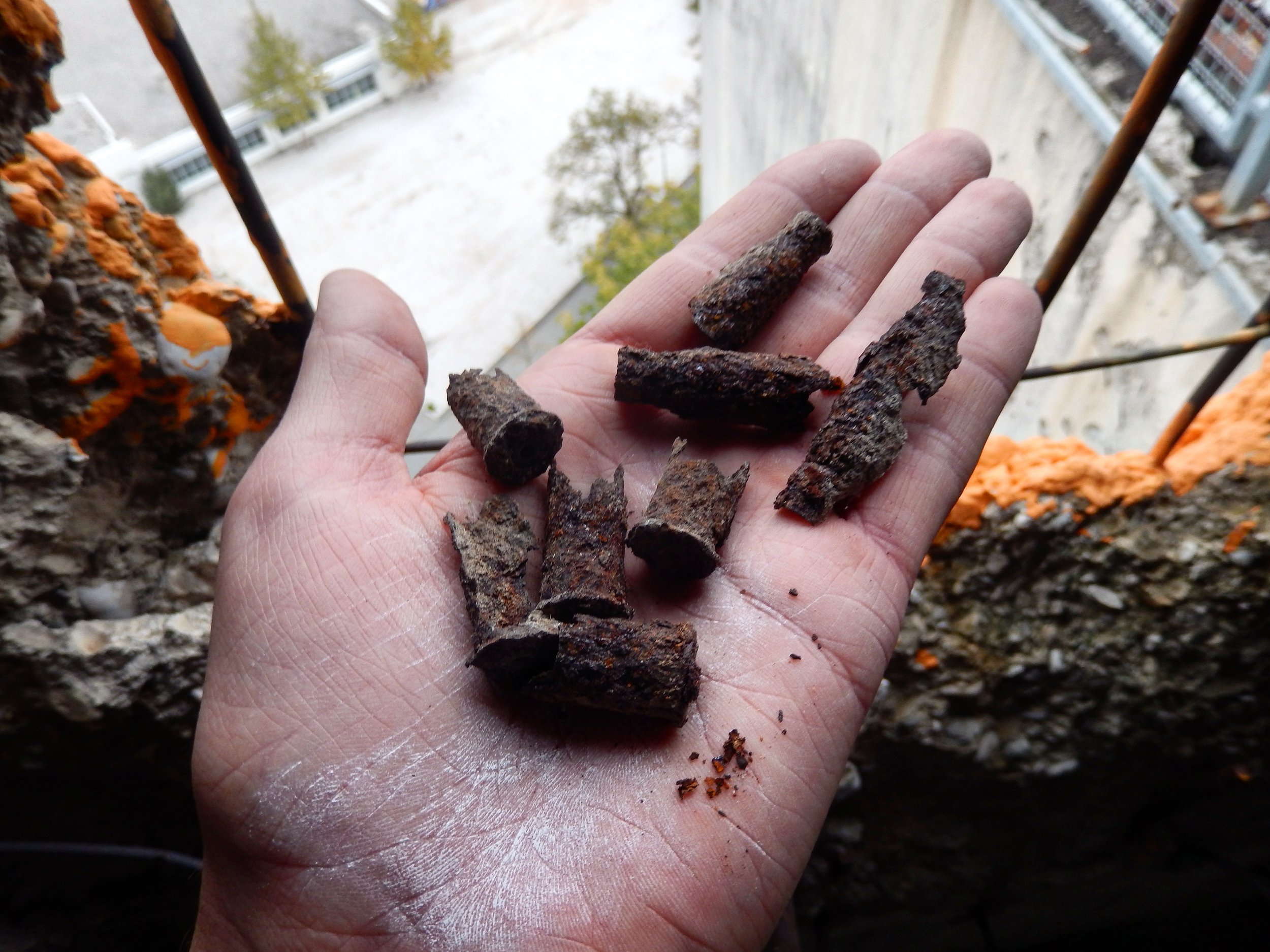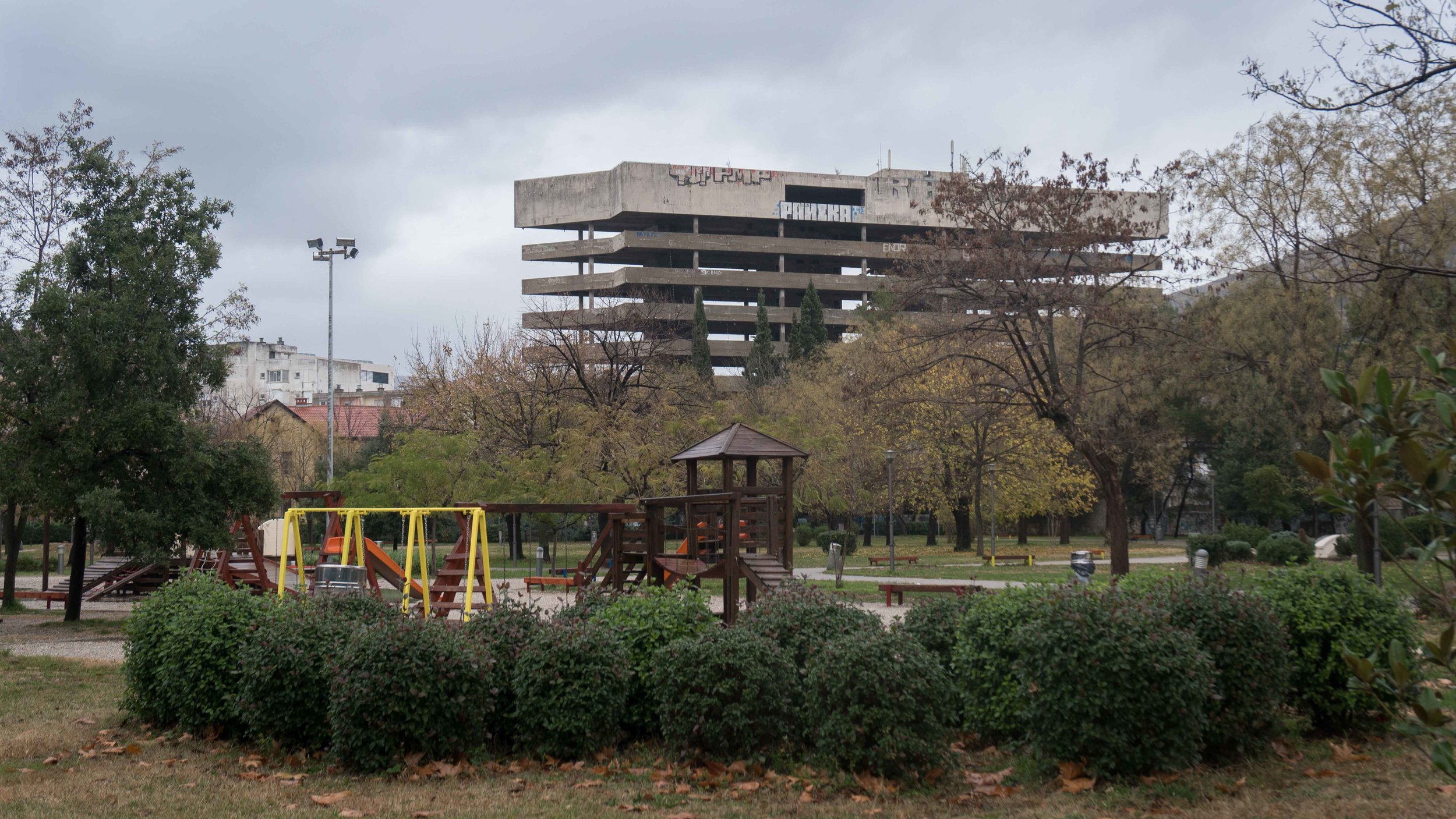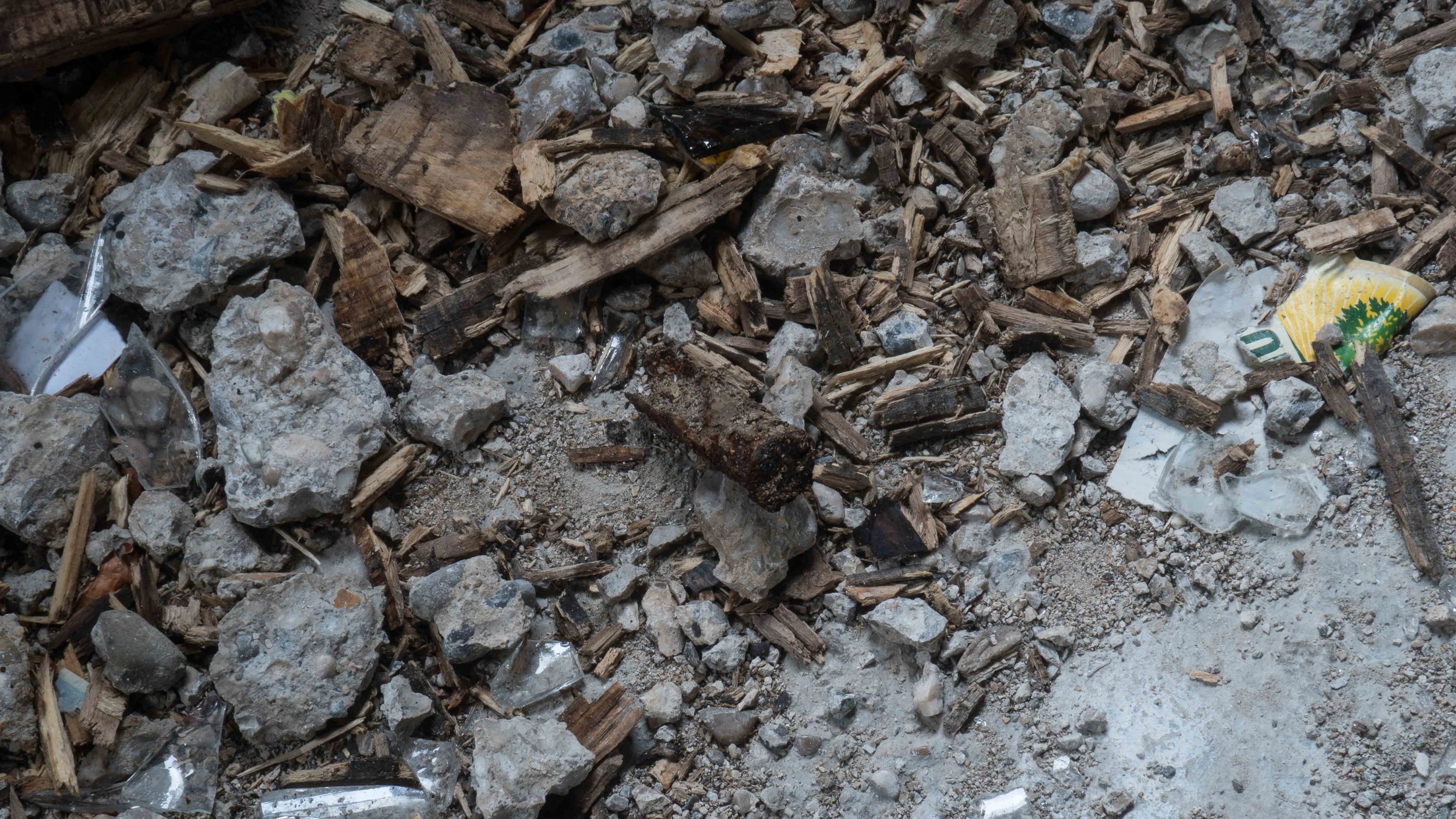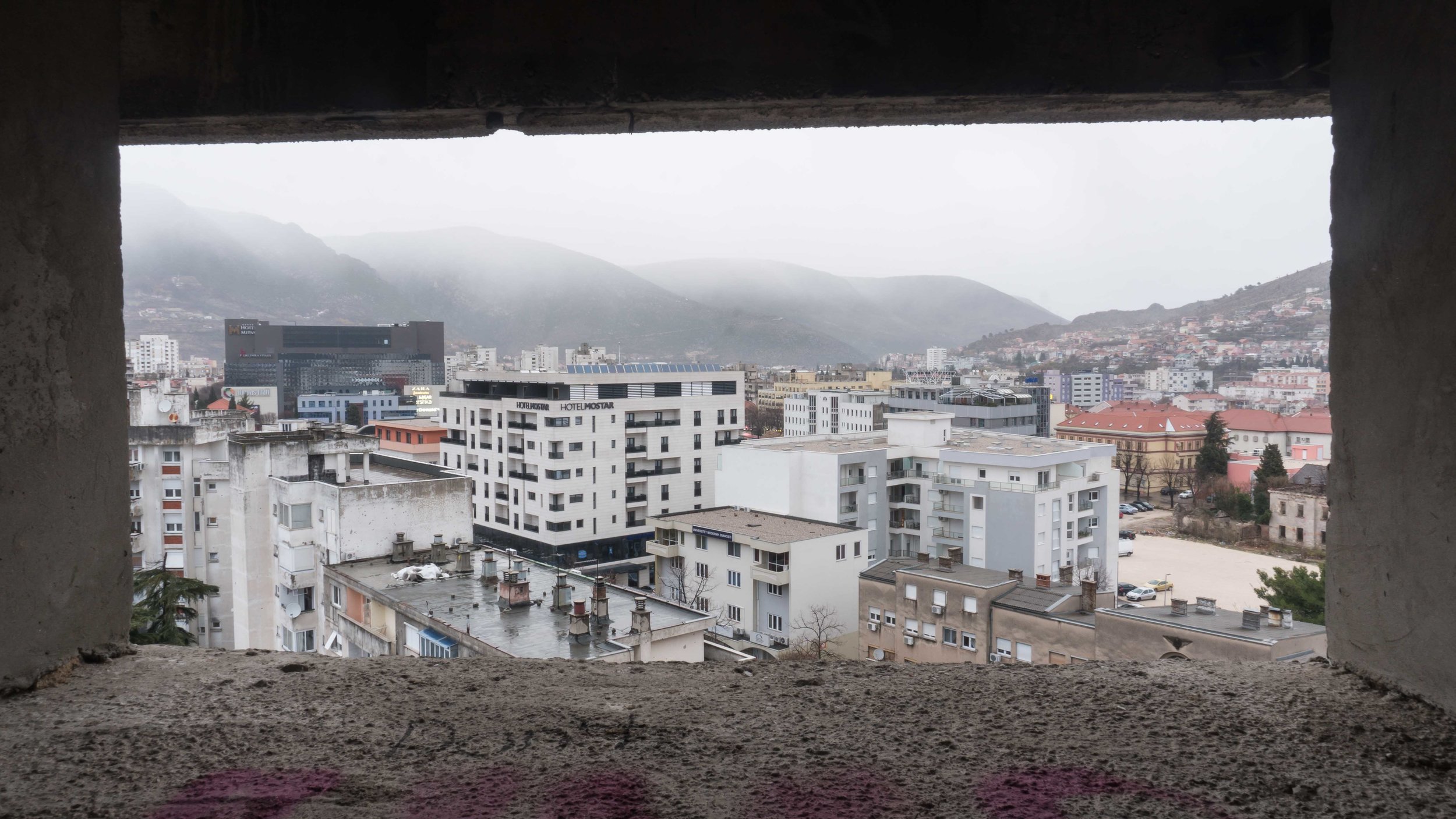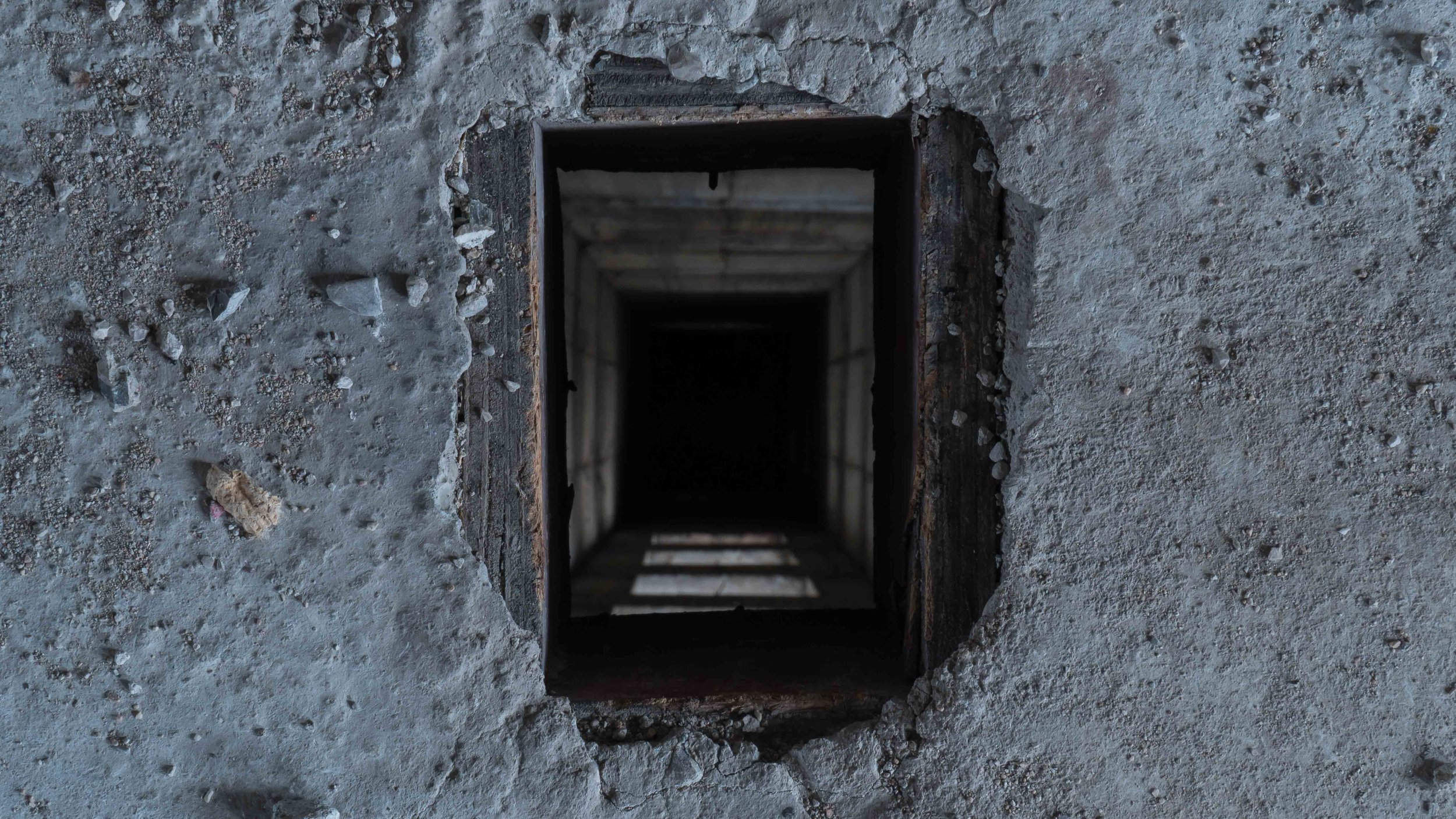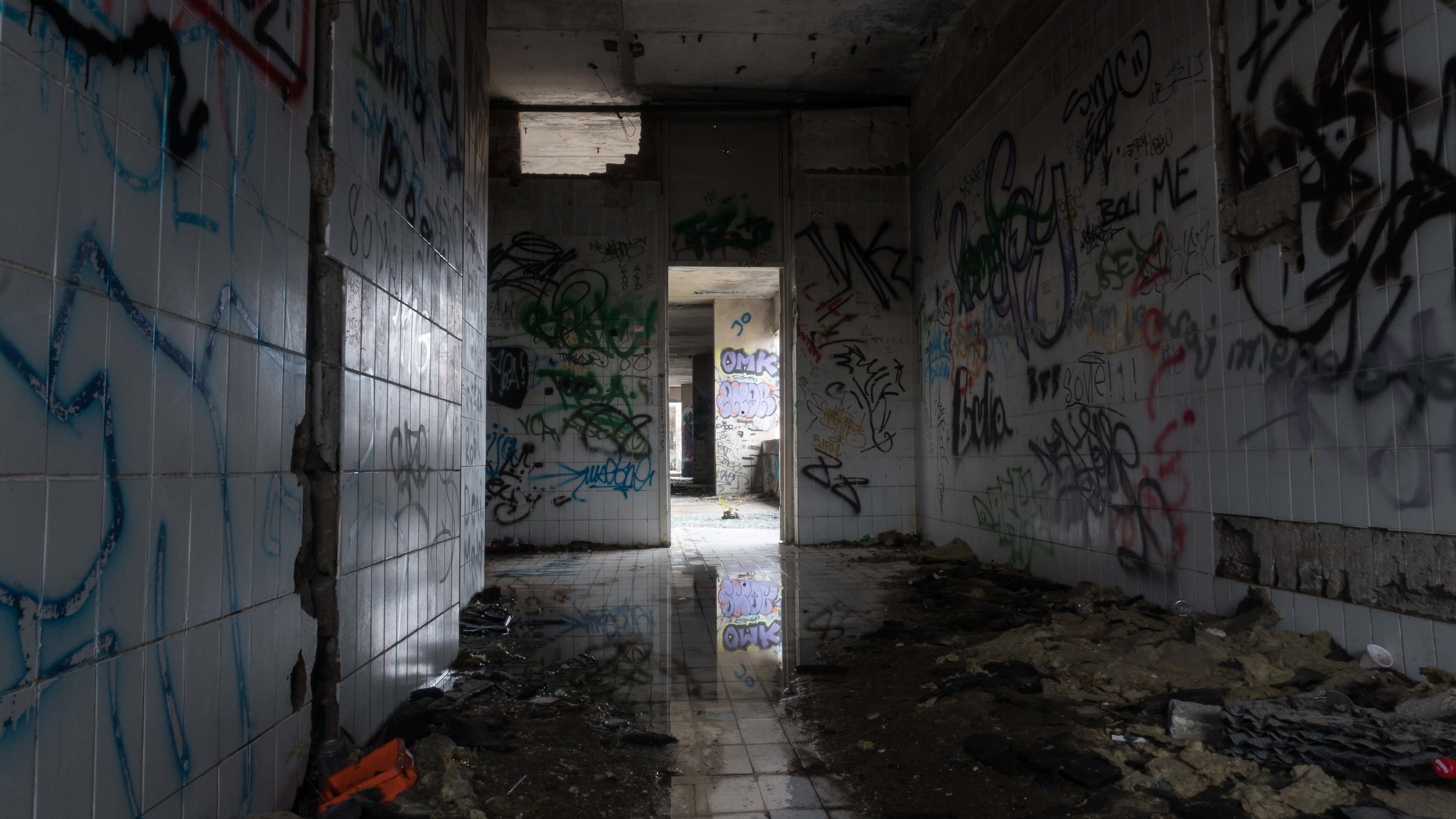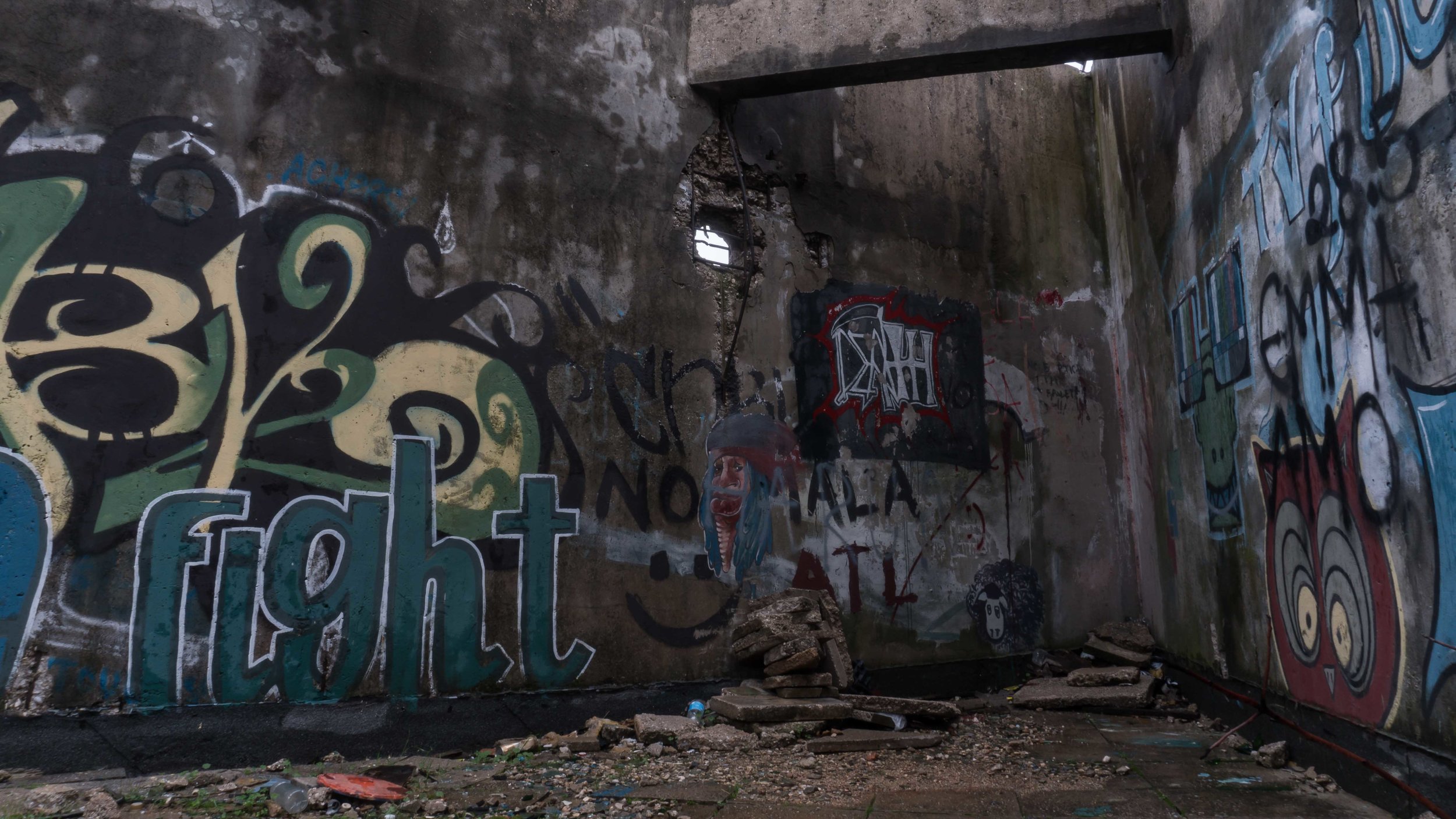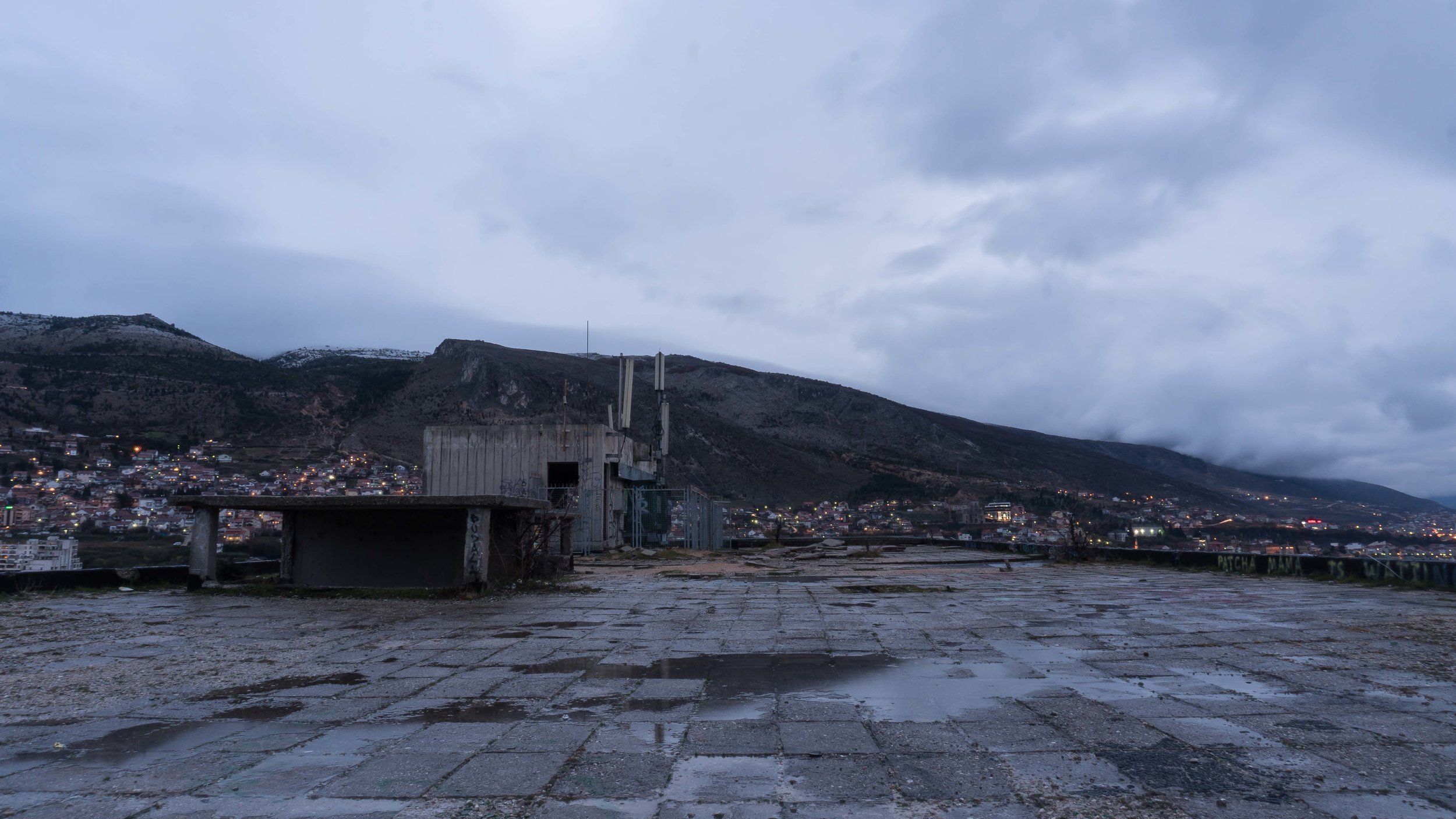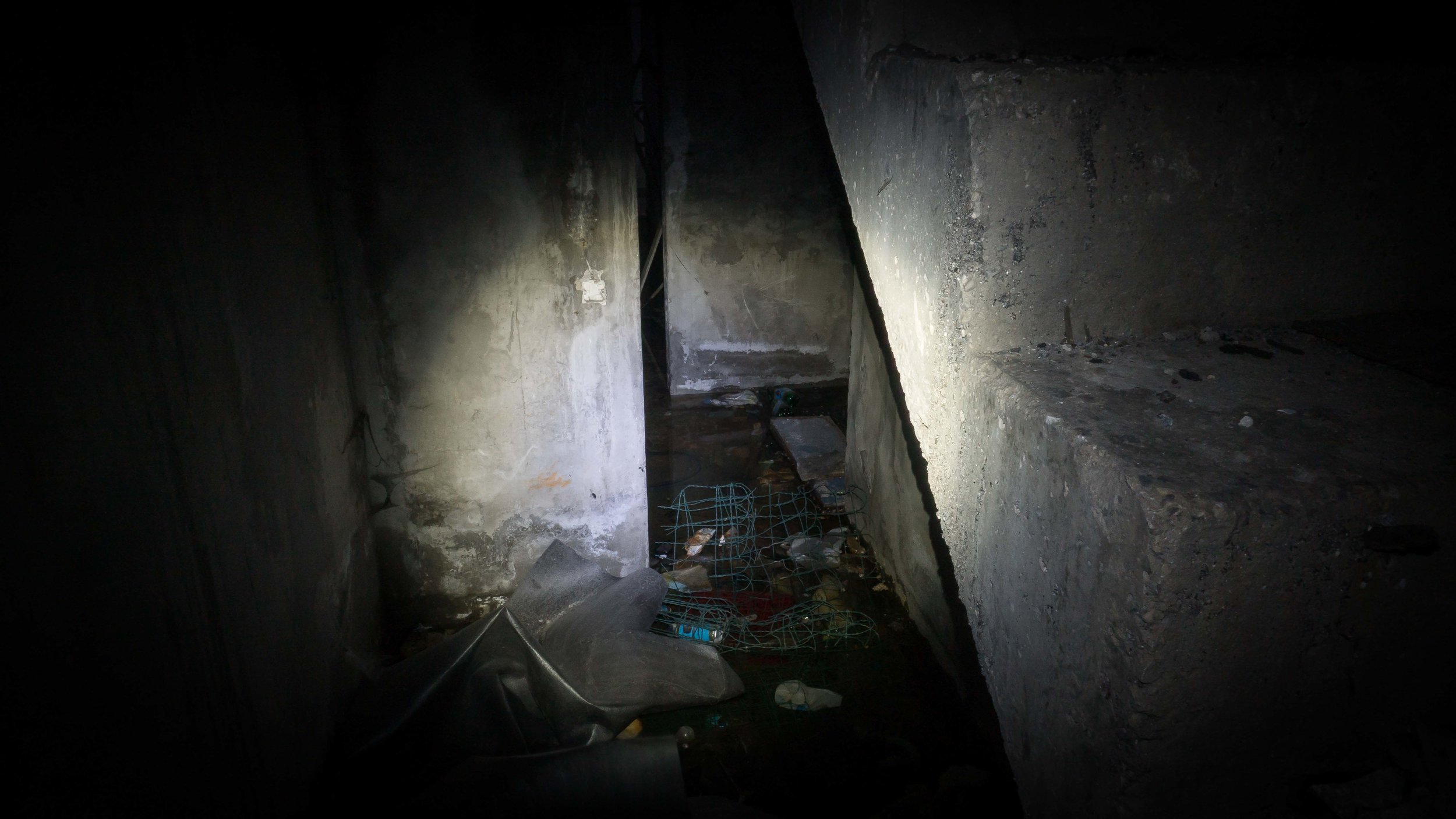In the center of Mostar, Bosnia & Herzegovina, stands the former Ljubljanska Banka. It is among the tallest buildings in the city and a casualty of the Bosnian War after the breakup of Yugoslavia. During the occupation it was used as a Sniper’s nest leading to it’s new alias, the Sniper Tower.
After The Siege of Mostar in ‘92 the Croatian Defence Council (HVO) and the Army of the Republic of Bosnia and Herzegovina (ARBiH) took control of Mostar forcing out the Yugoslav People’s Army. The first siege resulted in around 90,000 residents of Mostar fleeing the city and numerous religious and cultural buildings were damaged or destroyed.
Next began the war within a war; the Croatian Defence Council and Army of the Republic of Bosnia and Herzegovina turned on each other beginning the Croat–Bosniak War as they divided and struggled for control of the city.
Separated by the River Neretva, the HVO controlled the western part of the city and Bosniaks (ARBiH) the eastern. Among the destruction, the Croatians destroyed 10 mosques and the Stari Most (The Old Bridge) which was built in the 16th century; in 2004 multiple global organisations reconstructed the bridge along with donations from the newly independent Croatia. See the Stari Most by night here.
Nevertheless, the bridge is not the only vestige of war in the city; there is one structure lesser known than the Stari Most which also had strategic advantage, the Ljubljanska Banka. Today, it stands as a stark reminder of what happened with bullet holes covering the face of the building and rifle casings among the glass and rubble on the upper levels.
300m from the River Neretva and 1km from the Stari Most, the Ljubljanska Banka is situated next to numerous apartment buildings with apparent bullet holes in their facade.
Bottom-center moving right you can see residual damage from the war.
Each of the 10 floors of this tower are covered with debris with paths cleared by those whose curiosity lead them into the dilapidated shell.
The stairwell is open and exposed so one must take care whilst ascending; there is a second more confined staircase on the northern side of the tower.
Bottom left, where the roof meets the adjacent wall you can make out the bullet holes.
These are my original impressions when visiting in 2016:
It is a triangular concrete shell peppered with bullet holes. When you approach the building you can see the ground floor has been bricked-up, but to the rear and out of sight it is possible to enter. You must be careful where you drop down and your first instinct when landing is to put your hands out to brace but there are hypodermic needles and glass on the floor. As you climb the ten story tower you can see reel-to-reel tape spools and dot-matrix printed documents scattered around; the building is a time capsule. Every level is covered in artwork and graffiti, much being politically based on the war and centred around struggle and loss.
Ten stories of elevator shaft
To access the roof you must climb a rusted steel ladder. There is an electrical service building which is one of the sites where the Croats would fire down to the street and surrounding buildings. You can find rifle casings among the dust and rubble. The corroded steel reinforcements in the concrete are exposed and bent back most likely from explosions; smaller holes have been crudely dug just big enough to see through with a rifle.
Before leaving I entered the sublevels which were in total darkness. Bundles of documents floated in plastic sacks in the flooded basement; the water was up to knee level and tinted a copper colour from two decades of stagnation.
The basement remains flooded and virtually inaccessible.
Sealed sacks of dot-matrix printed records.
Like in Kosovo, I had heard some of what had happened here and the experiences of the people, but standing among what is left behind you begin to realise the reality.
This photograph captures many aspects of the city stretching generations: the tower, shelled buildings from the war and the beauty of the Mostar Gymnasium founded in 1893. To the right you can see the minaret of a neighboring mosque, and out of frame upon the hilltop is a large cross which illuminates at night.
A message left by a previous visitor
If you enjoyed this, you may also like Abandoned Relics of War: Exploring A Deserted Yugoslavian Aircraft Hangar.
